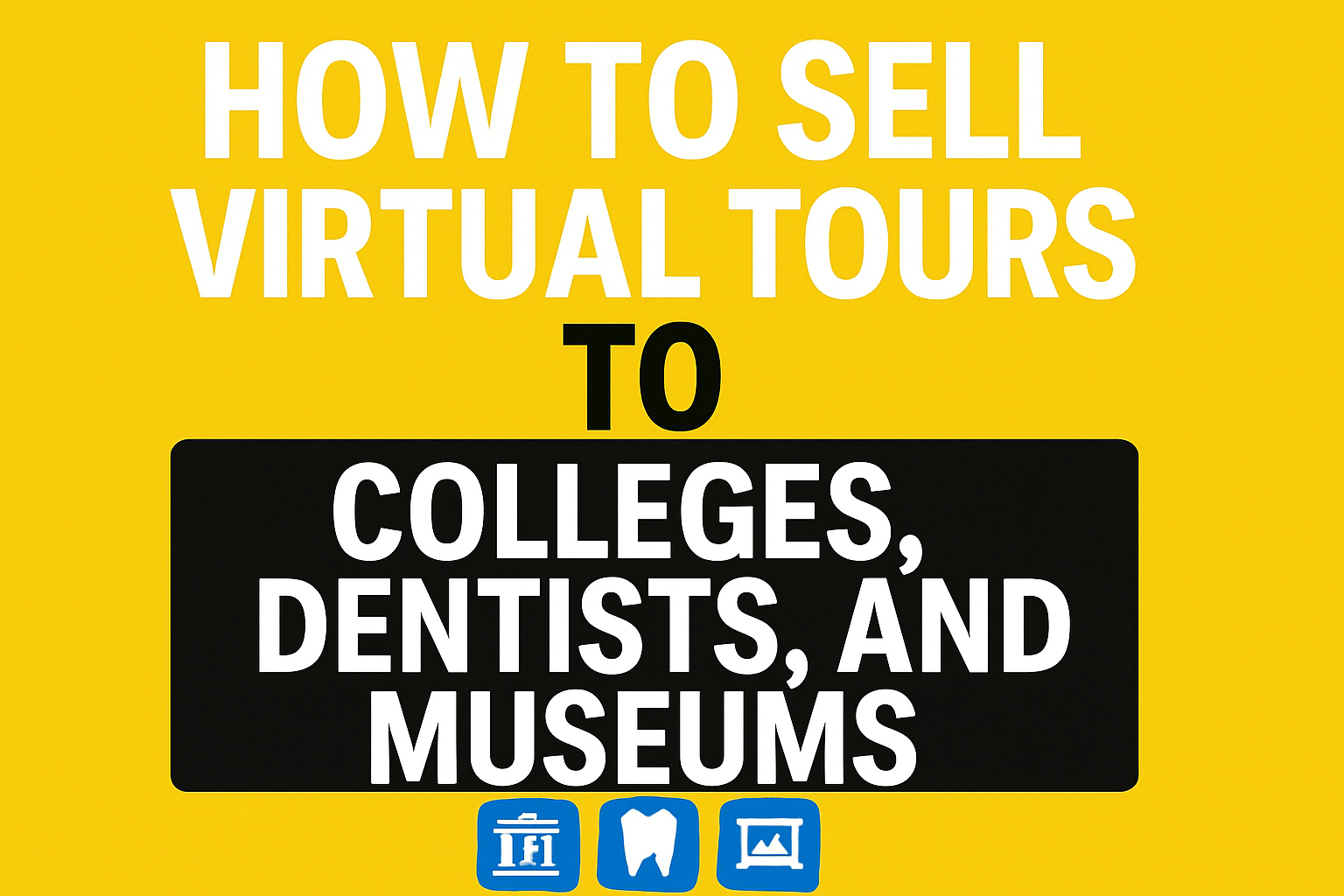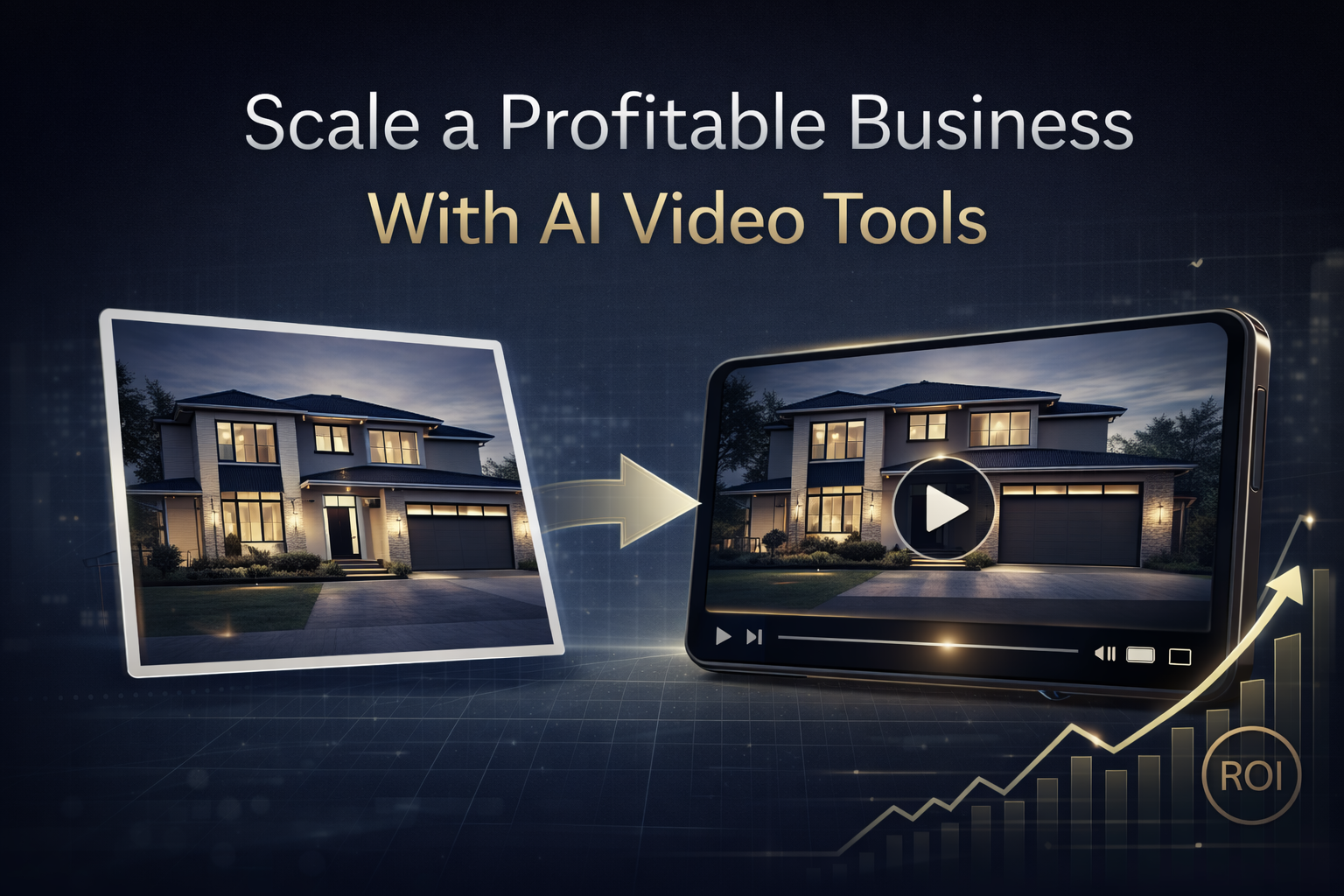How To Sell Virtual Tours To Colleges, Dentists, and Museums With Joel Neagles
Selling virtual tours may sound like a niche service, but for Joel Neagles, it turned into a profitable niche business—specifically with colleges, dentists, and museums. These aren’t your typical real estate clients. But that’s the point. When you learn to package and sell 360° virtual experiences to high-credibility institutions, the doors open wide (literally and financially).
In this post, we’ll break down exactly how Joel approaches, pitches, and closes deals with large campuses, professional offices, and even cultural centers—so you can copy what works and land high-paying virtual tour clients outside of real estate.
🎥 Watch the full Joel Neagles case study interview here
Why Colleges, Dentists, and Museums?
Let’s start with the obvious question:
Why go after these kinds of businesses instead of sticking to real estate?
The answer: These clients have more budget, longer-term value, and a stronger need for immersive experiences.
Colleges
- Use virtual tours for admissions, recruiting, and out-of-state marketing
- Often need multiple campus locations or departments documented
- Budgets are larger and approval processes are slower—but the payoffs are bigger
Dentists
- Want to showcase the cleanliness, technology, and friendliness of their practice
- Stand out in a competitive local market
- Love embedding tours on Google and their website to improve local SEO
Museums
- Attract new donors, visitors, and press with a unique online experience
- Great for marketing seasonal exhibits or school outreach programs
- Often underutilize tech, so a virtual tour feels fresh and exciting
Each of these verticals values visual credibility and online presence—which makes virtual tours a perfect fit.
Step 1: Build the Right Mindset
Most photographers and tour creators think small. They wait for referrals. They respond to requests. They hope someone stumbles onto their site.
Not Joel.
“I look at it like: I’m a business owner helping other business owners look amazing online.”
He doesn’t wait for leads. He hunts them down with purpose.
If you want to sell virtual tours in these spaces, start by thinking like a consultant, not a photographer. You’re not just delivering a 360° photo—you’re solving a visibility and marketing problem.
Step 2: The “Pre-Sell” Approach That Works
Joel doesn’t pitch a generic “virtual tour.”
He leads with why it matters for their business type.
For example:
- To a college admissions director:
“Wouldn’t it be powerful if out-of-state students could explore your campus from their phones before applying?”
“Imagine a patient booking an appointment because they saw how clean and modern your practice looks online.”
“How cool would it be to preserve your exhibit in a 360 experience and use it for promotions, field trips, or donor campaigns?”
Each pitch is customized, but it always ties the virtual tour to a business objective.
And that’s what makes them say yes.
Step 3: Use This Outreach Method
Joel’s go-to tactic for starting conversations is surprisingly simple:
“Email or walk in. That’s it. I keep it short. I point them to a sample. And I ask if they’d like to explore doing the same for their space.”
He might email the admissions contact at a college with a subject line like:
“Virtual Campus Tour For [University Name]?”
Body:
“Hi [First Name],
I’m a virtual tour specialist and I recently created a campus walkthrough that helped another university increase their engagement online.
Would you be open to seeing how that might look for [Your Campus Name]?
Here’s a sample: [Link]
Thanks,
Joel”
This same formula works for dentists, museums, libraries, and any space that has a visual presence to show off.
💡 Bonus Tip: When you mention real examples or link to your tour on Google Street View, you build instant trust.
Step 4: Use Google and CloudPano To Show Proof
Once Joel books a meeting or sparks interest, he points to actual work he’s done—and where it lives online.
- For colleges: embedded on their .edu websites or YouTube
- For dentists: live on their Google Business Profile
- For museums: featured on local news or sponsor emails
By leveraging platforms like CloudPano, Joel delivers clean, high-quality 360° experiences that clients can explore on desktop or mobile.
And by embedding the tour in Google Street View, the value multiplies:
“They start showing up better online. Their Google ranking improves. And patients or students say, ‘Wow, this place looks legit.’ That’s what sells it.”
Want to see his full system?
🎥 Watch Joel’s full breakdown and interview here
Step 5: Price It Right (Without Underselling)
This is where most creators drop the ball.
They charge $100–$200 like it’s a real estate shoot.
Joel does value-based pricing. Here’s what that looks like:
- College tour (multiple buildings, interactive map): $1,500–$5,000
- Dental office (single location, embedded on Google): $500–$1,000
- Museum or gallery (exhibit walkthrough): $1,000–$3,000+
These aren’t fixed rates—they depend on scope. But the key is: Don’t price like a freelancer. Price like a marketing partner.
If the virtual tour helps them land more students, patients, or foot traffic, then it’s worth more than a few hundred bucks.
And they know it.
Step 6: Use One Project To Get Many
Here’s a secret Joel shares:
“Once you land one college, you can pitch the entire state system.”
Or one dentist → pitch the whole group.
One museum → connect to the tourism board.
These industries are tight-knit. They share vendors. They refer quality.
So once you deliver great work for one client, you can create a domino effect.
Step 7: Rinse and Repeat With Confidence
If you’ve never pitched a college or medical office before, you might feel intimidated.
But the beauty of Joel’s approach is that it’s based on repetition and simplicity.
- Use one strong example as your foot in the door
- Speak to their unique goals (admissions, reputation, foot traffic)
- Offer a professional, branded experience using CloudPano
- Follow up like a pro, close the deal, and deliver with excellence
“After the first couple pitches, it gets easier. It’s all about showing the right people the right thing—and asking them to take the next step.”
Final Thoughts: You Don’t Need To Reinvent The Wheel
Joel Neagles didn’t invent virtual tours.
He just found the right industries… created high-quality deliverables… and kept his messaging clear and business-focused.
If you want to make more money selling virtual tours outside the crowded real estate space, follow his playbook.
📍Colleges
🦷 Dentists
🏛️ Museums
These clients have money, visibility problems, and a desire to look great online.
And that’s where you come in.
🎥 Watch Joel Neagles walk through the full process here
Copy what works—and close your next big deal.














.png)



.png)





.png)

.png)





